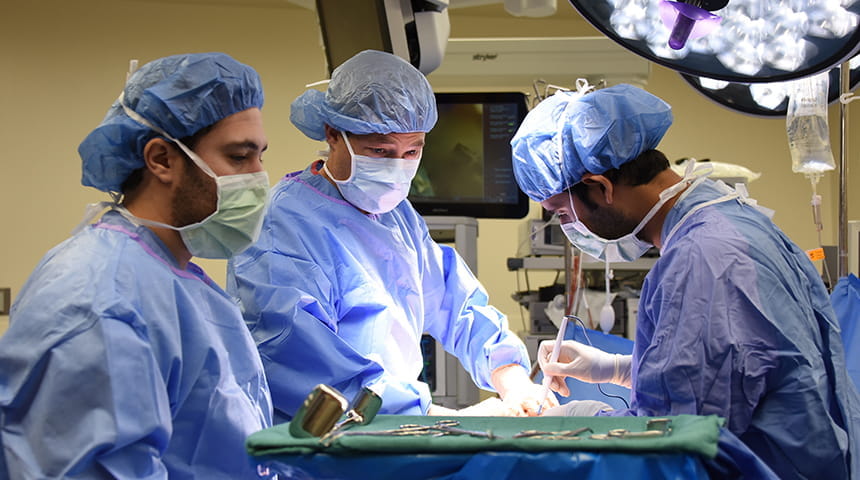Prostate cancer is the most frequently diagnosed and second deadliest cancer in men in the United States. Urologists at Indiana University School of Medicine have developed new treatments for prostate cancer and are continuing to research ways to improve diagnosis and treatment of aggressive tumors. The procedures performed by faculty in this department draw patients from all over the world to IU School of Medicine.
The prostate is a male reproductive organ that sits just under the bladder. An enlarged prostate could be benign or malignant. Many tumors grow slowly and may not even require treatment. Others are aggressive and grow quickly, causing major health problems or death.
Screenings
Annual prostate-specific antigen (PSA) screenings are recommended for men ages 50-70. PSA is a protein measured by a blood draw. Screenings find cancer 10 years before symptoms begin, so they are not recommended if someone’s life expectancy is less than 10 years. PSA levels can vary from day to day and not all elevated PSAs are from cancer. It is common to have PSA elevation from benign enlargement of the prostate (this can cause trouble starting the urinary stream and a weak urinary stream). Infection or inflammation can also cause a rise in PSA. Screenings find both malignant and benign tumors. More than 50 percent of men will have slow-growing, grade 1 (stage 1) prostate cancer in their life and never know it. If PSAs are above a certain level, a biopsy will be suggested. Biopsy can help determine the grade of a tumor:
- Grade 1: Typically only requires active surveillance using a repeat biopsy and PSA checks.
- Grade 2: Can be cured with a single treatment.
- Grades 3-5: Often require multiple treatments (for example surgery, radiation, and hormone therapy).

The new grading system for prostate cancer (grade group) is based on the old Gleason score, but is easier to understand. A Gleason score helps determine how aggressive a prostate cancer tumor is. The chart to the right shows how the Gleason scoring system relates to the new method of grading prostate cancer.
Treatment
Several treatment options exist for aggressive tumors, including prostatectomy, which is a partial or complete removal of the prostate. A prostatectomy can be done with open surgery or with a robotic-assisted method. Urologists with IU School of Medicine also developed high intensity focused ultrasound, or HIFU, to treat patients with prostate cancer. The technology started here in the 1970s and the treatment was approved by the Food and Drug Administration in 2015.


